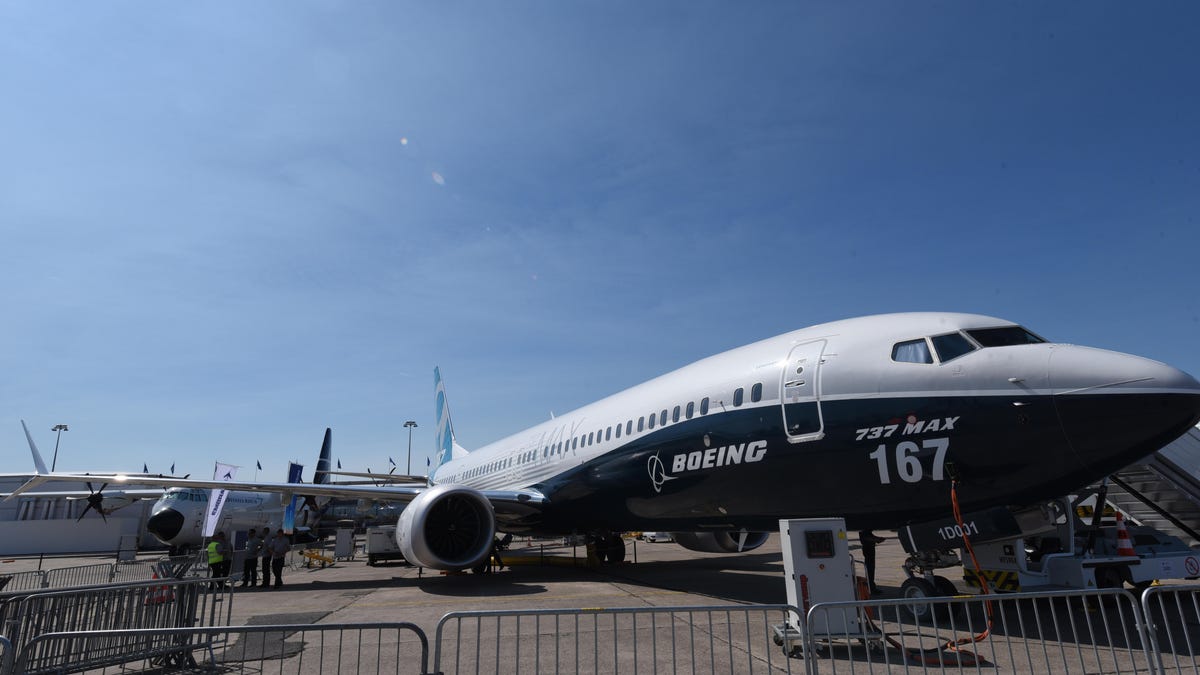Boeing details fixes to get 737 Max flying again
As Congress opens hearings on Boeing's troubled 737 Max, the company reveals how it will change the airplane following two deadly crashes.

Eager to assure airlines and passengers that its best-selling airplane is safe, Boeing on Wednesday announced how it will update a flight control system that's at the center of investigations into crashes in Ethiopia and Indonesia that killed 346 people.
Speaking at the company's 737 factory in Renton, Washington, Boeing executive Mike Sinnett opened the briefing by expressing sympathy for the victims of both crashes and for their families.
"The 737 family is a safe airplane family. And the 737 Max builds on that tremendous history of safety that we've seen for the last 50 years," he said. "We're working with customers and regulators around the world to restore faith in our industry and also to reaffirm our commitment to safety."
Though the official causes of both accidents have not been determined, investigators have found clear similarities. Under scrutiny is a flight control system called MCAS (for Maneuvering Characteristics Augmentation System) that pushes the 737 Max's nose down when it determines that it's too high. Preliminary data from both crashes show that flight crews struggled to take control as the airplanes continually dove just after takeoff.
Boeing said the fixes will "reduce the crew's workload in non-normal flight situations and prevent erroneous data from causing MCAS activation." Among them:
- MCAS will now compare inputs from two sensors, instead of just one. (The system is activated by angle-of-attack sensors near the airplane's nose.)
- If the sensors disagree by 5.5 degrees or more, MCAS will not automatically activate. According to a preliminary report from the first crash in October, a faulty AOA sensor was sending incorrect information to MCAS.
- An indicator on the flight deck display will alert the pilots when the sensors disagree. Until now, Boeing sold a warning light alerting pilots to a fault as part of an optional package of equipment. The aircraft involved in the first crash did not have that light installed.
- MCAS will kick in only one time if it determines an aircraft's nose is too high. Also, MCAS will never move the horizontal stabilizer (the flight surface on the tailplane that moves an aircraft up and down) with more force than the pilot can exert on the control column. Both crash investigations show the planes oscillated several times before crashing, indicating that the system activated several times even after pilots recovered from the dives.
- Flight crews will need 21 or more days of instructor-led and simulator training on the 737 Max, including interacting with MCAS, before they can fly the aircraft. Boeing and the FAA are facing charges that current 737 Max pilot training did not mention the system in order to minimize the cost and time of certifying pilots. That training is now the focus of multiple investigations including one by Congress, which opened a hearing Wednesday.
Boeing didn't give a timeline for the changes or say when the 737 Max, which remains grounded around the world, might carry passengers again. Before that can happen, the FAA and aviation safety agencies in other countries will need to certify the fixes as safe. Airlines will then need to install them and retrain crews.

